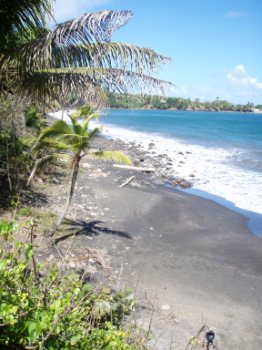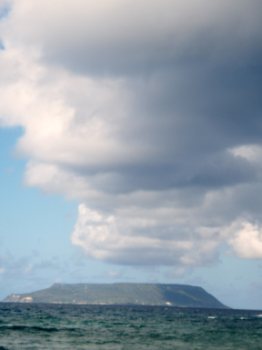|
Guadeloupe
Guadeloupe is an island group or
archipelago located in the eastern
Caribbean Sea, it is an overseas department
of France. As with the other overseas departments, Guadeloupe is
one of the twenty-six regions of France, an integral part of the Republic and a member of the
EU. However, Guadeloupe does not fall under the Schengen
Agreement, the
prefecture of Guadeloupe is
Basse-Terre.

La Guadeloupe (pronounced
gwa-da-LOOP)
Departure tax:
None
Area: 1434 square
kilometres
Population: 451,
000
VAT:
8.5%
Added Tax: 2.5%
added to many items
Octroi de Mer: is
an import duty of 7%, this applies to all imported goods even from
France
Famous for: Its
butterfly shape
Country code:
590
Currency:
Euro
Language: French,
Creole
Capital:
Basse-Terre
Phrase: Pas ni
problem (No problem, no worries)
People:
Guadeloupeans
History: Around 700 B.C. the Huecoides, from pre-Columbian
Andes arrived in the archipelago then migrated to Puerto Rico. Between 300 and
700 A.D. the peaceful Arawaks arrive from the Orinoco Delta. They introduce
hammocks and tobacco. In the 14th Century, coming from the Amazon
Basin, the Caribe Indians or Kalinagos arrive. These brave warriors conquered
the Lesser Antilles thanks to their superiority at sea. They exterminated the
Arawaks and named the island, Karukera, meaning, island of beautiful waters.
During his second trip to America, Christopher Columbus became
the first European to land on Guadeloupe on the 4th of November
1493, seeking fresh water. He
called it Santa María de Guadalupe de Extremadura, after the image of the Virgin
Mary venerated at the Spanish monastery of
Villuercas, in Guadalupe, Extremadura and to please Queen Isabel, the catholic who had
financed his expedition. The expedition set ashore just south of Capesterre but
did not leave any settlers ashore. Christopher Columbus is credited with
discovering the pineapple on the island of
Guadeloupe in 1493, although the fruit had long been grown in South
America. He called it "piña de Indes" meaning "pine
of the Indians". Violent fighting took place with the Carib Indians and the
Spanish left in 1604.
After successful settlement on the island of St Christophe (St
Kitts), the French Company of the American
Islands delegated Charles Lienard and Jean Duplessis, Lord of
Ossonville to colonise one or any of the region’s islands, Guadeloupe,
Martinique or
Dominica. Due to Martinique’s inhospitable nature,
the duo resolved to settle in Guadeloupe and in 1635 took possession of the
island and wiped out many of the Carib Indians. It was annexed to the kingdom of France in
1674. Over the next century, the island was seized several times by the
British. The economy benefited from the hugely
lucrative sugar business introduced during the
closing decades of the seventeenth century: one indication of Guadeloupe's
prosperity at this time is that in the Treaty of Paris (1763), France, defeated in war, agreed to abandon its
territorial claims in Canada in return for
British recognition of French control of Guadeloupe.
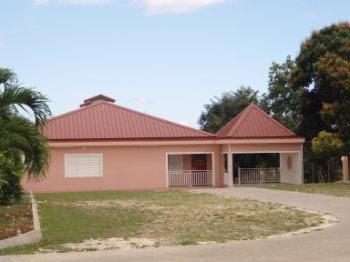  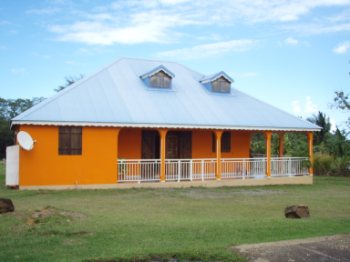
Berger Paints have much to answer for. The
pink one we have seen a few similar are Kingdom Hall
for Jehovah Witnesses. The yellow one is my
favourite, I took it at a jaunty angle to show the navy blue and white eaves,
red and white striped sun blinds and purple banister tops, pale green wall and
white fencing, I think it all works quite well. Not sure what Lawrence
Llewellyn-Bowen would make of it. And an orange
one.
In 1790, the upper classes of Guadeloupe refused to obey the
new laws of equal rights for the free coloured and attempted to declare
independence, resulting in great disturbances; a fire broke out in
Pointe-a-Pitre and devastated a third of the
town, a struggle between the monarchists (who wanted independence) and the
republicans (who were faithful to revolutionary France) ended in the victory of
the monarchists, who declared independence in 1791, followed by the refusal to
receive the new governor appointed by Paris in 1792. In 1793, a slave rebellion
started, which made the upper classes turn to the British and ask them to occupy
the island. In an effort to take advantage of the chaos ensuing from the French
Revolution, Britain attempted to seize
Guadeloupe in 1794 and held it from the 21st of April to the
2nd of June. The French retook the island under the command of Victor
Hugues, who succeeded in freeing the
slaves. They revolted and turned on the
slave-owners who controlled the sugar plantations, but when French interests were threatened,
Napoleon sent a force to suppress the rebels and
reinstitute slavery. Louis Delgres and a group of revolutionary soldiers killed themselves
on the slopes of the Matouba volcano when it became obvious that the invading
troops would take control of the island. The occupation force killed
approximately 10,000 Guadeloupeans in the process of restoring order to the
island.
On the 4th of February 1810 the British once again
seized the island. By the Anglo-Swedish alliance of the 3rd of March
it was ceded to Sweden, but the British
administration continued in place while Swedish commissioners were sent to make
arrangements for the transfer. Sweden already had a colony in the area, but then
by the Treaty of Paris of the
30th of May 1814, ceded Guadeloupe once more to France. An ensuing
settlement between Sweden and the British gave rise to the Guadeloupe
Fund. French control of Guadeloupe was finally
acknowledged in the Treaty of Vienna in 1815. Slavery was abolished on the island in 1848 at
the initiative of Victor Schoelcher after a difficult fight.
Today the population of Guadeloupe is mostly of
African origin with an important active
European and Indian population. Lebanese/Syrians,
Chinese, and people of many others are also present.
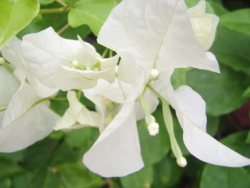 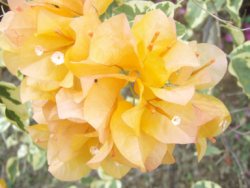  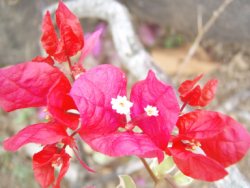
Hurricanes: During the 20th Century, the island was
devastated by several hurricanes:
-
On the 12th of September 1928, a hurricane
caused extensive damage and killed thousands of people.
-
On the 22 nd of August 1964, Guadeloupe was
ravaged by Hurricane Cleo which killed 14.
-
Two years later, on the 27th of September 1966,
Hurricane Inez caused extensive damage and
killed 27, mostly in Grande Terre. Charles De Gaulle visited the island after the hurricanes and declared
it a disaster area.
-
On the 17th of September 1989, Category 4 Hurricane
Hugo caused extensive damage, left more than 35,000
homeless, destroyed 10,000 homes, 100 percent of the banana crops and 60
percent of the sugarcane crops.
-
From late August to mid September 1995, the island was in the path
of three successive cyclones: Iris on August 28th - caused minor damages, Luis
on September 5th - caused moderate damages in north coast of Grande-Terre,
Marilyn on September 15th - caused moderate damage in Basse-Terre.
-
On September 21st, 1998, Hurricane Georges pounded the islands causing moderate damage and
destroyed 90 percent of the banana crops.
Black basalt sand on this particular
beach, Bear on a very volcanic outcrop. La Desirade (ex leper colony)
Geography: Whoever named the individual islands had a sense
of humour because the larger mountainous one is called Basse Terre (meaning -
lowland) and the smaller low one Grande Terre ( meaning - large land).
Guadeloupe comprises five islands: Basse-Terre Island, Grande-Terre (separated from Basse-Terre by a narrow sea channel
called Salt River) with the adjacent islands of
La Desirade, Les
Saintes and Marie-Galante. Basse-Terre has a rough
volcanic relief while Grande-Terre features rolling
hills and flat plains. Basse-Terre, the western wing, is home to the national
park, crowned by La Soufrière volcano. Hiking trails and a Jacques Cousteau
underwater reserve off Pigeon Island. South of the butterfly-shaped ‘mainland’
of Guadeloupe are a number of small archipelagos that give a taste of
Guadeloupe’s yesteryear. Ranging from the ex leper colony on La Desirade which gives a feeling of chill to the cosmopolitan
Terre-de-Haut and the largely rural
Marie-Galante.

Very
strange being in the Caribbean driving along a three lane
motorway. Still we did see a dog snoozing out of the sun - in the shade
of the central crash wall. We have seen all four corners of the butterfly by
hire car doing 522 kms and a few more by
bus.
Guadeloupe mixes the best of France – a fully modern
infrastructure and fantastic food – with a local culture that people here are
proud of and want to share. Guadeloupe’s two main islands look like the wings of
a butterfly and are joined together by a mangrove swamp. Grande-Terre, the
eastern wing of the island, has a string of beach towns that offer visitors
every variety of fun in the sun known to man. From surfing schools, canyoning,
rafting, to beach bars and long stretches of beautiful
sand with azure water. A very popular holiday destination with the people
of France until this years major strikes when they cancelled in their thousands,
causing some hotels to close, some never to re-open, but are being sold off as
apartments.
 
Further to the north, Saint-Barthelemy and the French part of
Saint Martin once came under the jurisdiction of Guadeloupe but on the 7th of
December 2003, both of these areas voted to
become an overseas territorial collectivity, a decision which took effect on the
22nd of February 2007. Their combined population was 35,930 and their
combined land area was 74.2 km² at the 1999 census. Guadeloupe thereby lost 8.5
percent of its population and 4.36 percent of its land area, based upon numbers
from that census.
Guadeloupe's culture is probably best known for the islanders'
literary achievements, particularly the poetry of Saint-John
Perse, the pseudonym used by Alexis
Leger. Perse won the 1960 Nobel Prize in
Literature "for the soaring flight and the
evocative images of his poetry which in a visionary fashion reflects the
conditions of our time."
 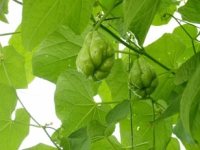 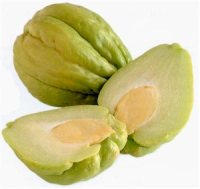 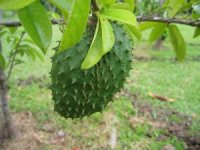 
Breadplant, Christphine in the tree and
cut in half (boiled for three or four minutes - texture and taste like marrow).
Soursop or ganabana on the tree and cut, Bear thinks
it tastes like pineapple, I think it tastes a bit like apple with the texture of
polystyrene. Just rip it open and pick chunks out as the seeds are a bit
random.
The traditional sugarcane crop is slowly being replaced by other crops, such as
bananas (which now supply about 50% of export
earnings), eggplant, guinnep, noni,
sapotilla, paroka, pikinga, giraumon squash, yam,
gourd, plantain, christophine, monbin,
prunecafe, cocoa, jackfruit, pomegranate, and many varieties of flowers. Other vegetables and root crops are cultivated for
local consumption, although Guadeloupe is still dependent on imported food,
mainly from France.
   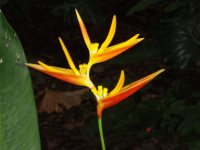 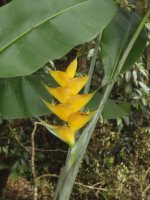
Prunes or monbin growing, frequently used
to produce monbin liqueur. Heliconia of all shapes,
sizes and colour grow everywhere.
Culture.
Guadeloupe has always had a rich literary production prolonged
today by many living writers, poets, novelists, essayists and journalists, among
them Mesdames Maryse Conde and Simone
Schwartz-Bart,
M. Ernest Pépin.
The arts. Famous painters and/or sculptors include Michel
Rovelas, Claudie Cancelier, Jean-Claude Echard, Christian Bracy, Roger Arekian,
les Frères Baptiste, Michelle Chomereau-Lamothe, Léogane, Pédurand, Nicole
Réache, Victor Sainsily.
Guadeloupean visual effects artist compositor Karim Sahai of
Weta Digital, New
Zealand, has worked on the visual effects of many
movies such as The Lord of the Rings, King Kong, and The Waterhorse.
Music and dance are also very popular, and the widely
accepted interaction of African, French and Indian cultures has given birth to
some original new forms specific to the archipelago. Islanders enjoy many local
dance styles including the quadrille "au commandement", zouk, zouk-love,
kompa toumbélé, as well as all the modern
international dances. Typical Guadeloupean music includes la
biguine and gwo ka à la base.
Kassav and Admiral T embody the
traditional and the new generation of music. Many international festivals take
place in Guadeloupe, like the Creole Blues Festival, the Marie-Galante Festival,
Festival Gwo-Ka Cotellon, etc. It goes without saying that all the Euro-French
forms of art are also omnipresent in the melting pot.
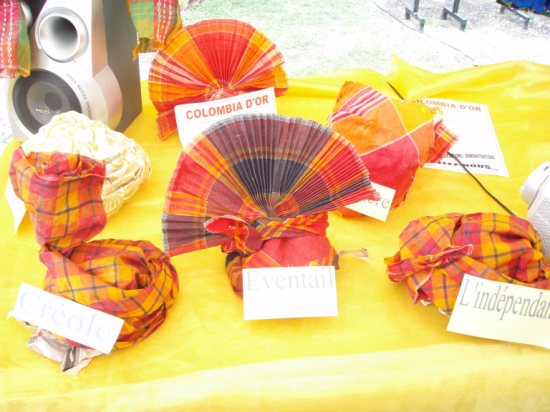 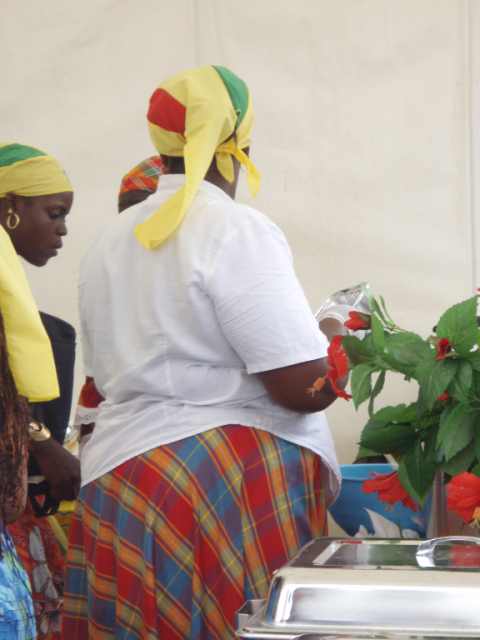
Dress. Women in particular have a unique style of
traditional dresses, with many layers of colourful
fabrics, now only worn on special occasions. On festive occasions they
also wore a madras (originally the 'kerchief' from South India) head scarf tied in many different symbolic forms. The
headdress could be done in many styles with names like the "bat" style, or the
"fire-fighter" style, as well as the "Guadeloupean woman." Jewellery, mainly of
gold, is also important in the Guadeloupean lady's dress, a product of European,
African and Indian inspiration. Many famous couturiers like Devaed and Mondelo
are Guadeloupeans.

ALL IN ALL an interesting island. A very French place, speaking French with some
understanding of English, driving on wrong side of the road, and Euros. Not as
typically Caribbean as other
islands.
|









